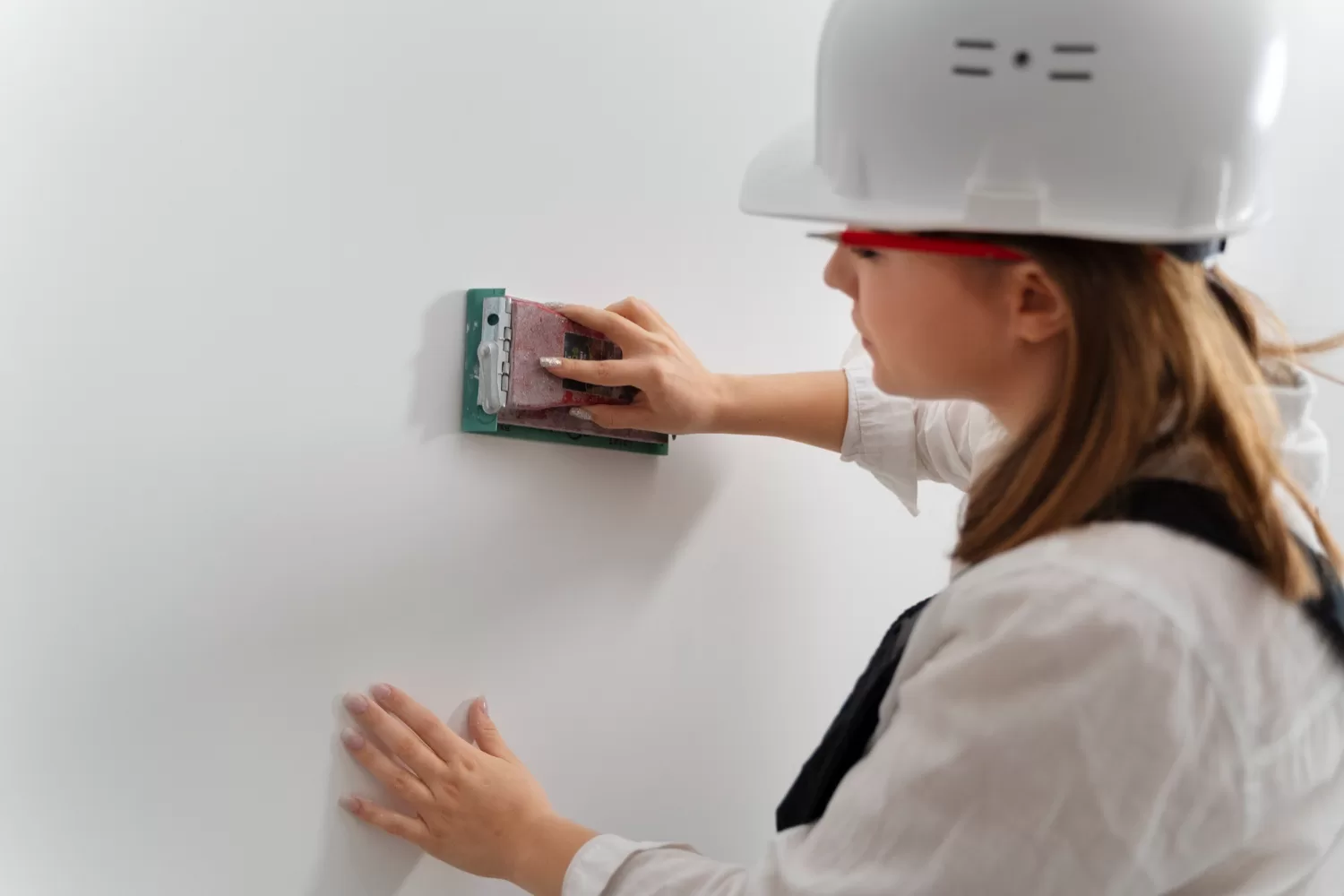It’s morning. You draw your curtains ready to start the day, only to be met with an unwelcome sight – patches of moisture on your windowsill. The patches remind you of the never-ending troubles that plague your home, especially during the colder seasons.
In our exploration of what causes condensation, we look beyond the inconvenience of foggy windows and peeling wallpaper, and instead at what causes condensation and what we can do to mitigate it.
We’ll also peek into the more significant consequences condensation causes, such as the growth of harmful bacteria, mould, aesthetic deterioration and when you should seek professional help.
Understanding Condensation
How do those puddles appear; why does condensation happen?
Condensation might sound complex, but at its core, it’s simply the everyday moisture you see on surfaces around your home. The vapour transforms into liquid when warm air meets a cold surface, such as your windows. Picture yourself drinking a glass of iced tea on a sunny day – the beads of water forming on the exterior is condensation at play.
In our homes, this phenomenon materialises on windows, tiles, and walls, creating an intricate dance between temperature differentials and atmospheric moisture.
What Are Common Causes of Condensation at Home?
Common Home Activities
These mundane everyday activities are the most overlooked causes of condensation. They are cooking, bathing and doing laundry.
As you simmer, boil, or steam food, water vapour is released into the air. The steam rising from a boiling pot fills the air with moist warm vapour. This invisible moisture then finds its way into corners and crevices of your home, and when that vapour meets a cold surface, it condenses and turns into puddles of water.
Bathing is a routine activity that actively causes condensation. The warmth of your shower creates a cloud of steam, filling the air with moisture. Without proper ventilation, this steam can settle on surfaces within your home and becomes a contributing factor to indoor condensation.
Another seemingly innocuous chore is laundry. Whether you’re air-drying clothes indoors or using a tumble dryer, water vapour is released, and it will impact indoor humidity levels.
Poor Ventilation
Especially in winter, we often keep our homes sealed tightly to stay warm and retain heat.
However, this seal can also trap moisture inside. When homes lack proper ventilation, it can lead to an increase in humidity levels and increase the occurrence of unwanted condensation around your home.
Inadequate Insulation
Cold surfaces, such as poorly insulated windows, walls, and ceilings, provide a suitable environment for condensation to occur. If your home was improperly built or the insulation is inadequate, it can cause surfaces inside your home to be as cold as the outside. This provides the perfect surface for the warm vapour in your homes to condense into water droplets.
Those are the most common causes of condensation in homes you may encounter. While it’s almost impossible to avoid these activities completely, here are some steps you can take to mitigate their effects.
Strategies to Fight Condensation
Now that you’re aware of what causes condensation, how do you fight it and keep your home dry?
If possible, keep your home well ventilated using exhaust fans or open windows whenever you’re doing any activity that increases moisture in the air. The airflow helps remove the excess humidity from the house.
When you’re cooking, use lids. Using lids while cooking helps trap steam and reduce the amount of moisture released into the air.
If you’re showering, promptly open the windows in your bathroom for a brief moment or turn on exhaust fans to allow steam to dissipate. Try to not let the steam out into your home.
To minimise moisture during the laundry process, whenever possible, opt for outdoor drying to keep moisture outside. If at all possible, consider using a dehumidifier in the laundry area to extract excess moisture from the air.
Understanding and actively addressing these everyday culprits empower homeowners to take control of their indoor environment, ensuring a healthier, more comfortable living space with minimised condensation risks.
The Consequences of Condensation
Condensation causes a significant impact on your home and family, for one, it can affect the occupants’ health, the energy efficiency of the property, the aesthetics of your home and even cause structural damage.
Because the appearance of condensation means poor air quality, if nothing changes this leads to the growth of mould and damp, which can have a very negative impact on your health. Most of the time we don’t associate health problems with the air in our homes, yet the quality of air in our homes can put us at risk of respiratory problems or skin conditions.
Seeking Professional Help
Identifying signs of persistent dampness in homes, such as visible stains, mould growth, musty odours, and deterioration of materials, is crucial for early intervention. Their appearance often points to deeper issues such as leaks, rising damp or penetrating damp. You are encouraged to implement preventive measures, including proper ventilation and insulation upgrades for your homes, however, for complex or persistent cases, professional assessments are indispensable.
Our trained experts conduct comprehensive inspections, covering factors like building structure, insulation, and ventilation. Early detection prevents long-term damage to the property and also helps mitigate health risks associated with mould that might plague your family.
For professional damp proofing support, turn to CS Damp Proofing. Our team of licensed specialists, well-versed in damp proofing, extends a full spectrum of services to customers situated across Yorkshire so you can create a healthier and more resilient living environment for your family. Contact us now.

